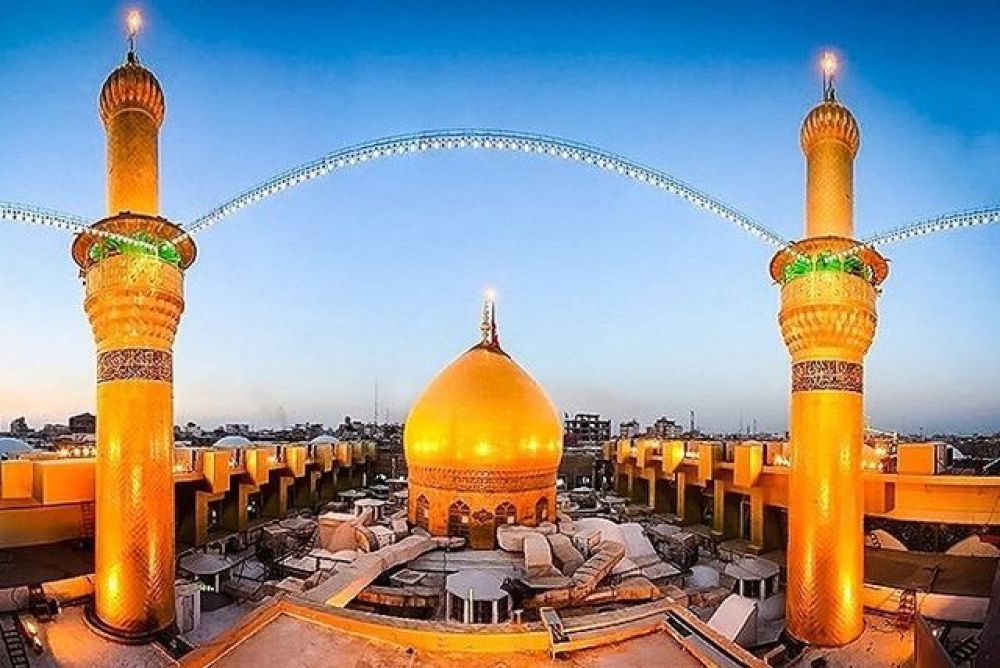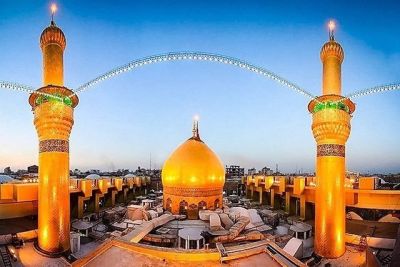

The primary activity at Imam Hussein Shrine is the spiritual act of Ziyarat, a form of pilgrimage to the resting place of Imam Hussein, the grandson of Prophet Muhammad and a central figure in Shia Islam. Visitors come from across the world to pay their respects, recite prayers, and absorb the sanctity of the site. The experience is profound, as the mausoleum stands as a symbol of sacrifice, resistance, and the eternal struggle against oppression. The beautiful golden dome and minarets reflect the reverence held by millions, while the inner sanctum, where Imam Hussein is buried, is adorned with intricate Islamic calligraphy and craftsmanship. Amidst throngs of devotees, you feel a sense of unity and intense spirituality that is both humbling and uplifting. This activity includes participating in collective prayers, listening to lectures by religious scholars, and possibly engaging with local traditions and rituals unique to the shrine.
Throughout the Islamic lunar calendar, several ceremonies commemorate the life and martyrdom of Imam Hussein, with the most significant being the observance of Ashura. This day marks the anniversary of Hussein's death at the Battle of Karbala, and it attracts millions of pilgrims. Attending these ceremonies involves participating in processions, listening to historical narrations, reciting elegies, and expressing mourning rituals. It's a deeply moving activity that allows visitors to connect personally with the somber yet resilient spirit of Shia Islam. The atmosphere during these events is charged with emotion, as the faithful honor the sacrifice of Imam Hussein with tears and expressions of grief. This shared experience is both a cultural immersion and a profoundly spiritual journey for the attendees.
Beyond the tomb of Imam Hussein, the surrounding complex boasts a rich architectural beauty that is worth exploring. It includes majestic courtyards, prayer halls, and libraries. Visitors can engage with the intricate details of Islamic art and calligraphy that adorn the walls and domes, each carrying historical significance and telling the epic story of Karbala. The complex is also home to the Al-Abbas Shrine, dedicated to Imam Hussein's brother who died defending him. Exploring these sites is to delve into a narrative of loyalty, valor, and devotion. This activity can be self-guided or accompanied by informative tours that provide deeper insights into the history and significance of each structure within the complex.
The city of Karbala is unique as it houses the shrines of both Imam Hussein and his brother Abbas. Performing prayers at these two sites is a spiritually enriching activity for many visitors. The opportunity to pray in such a revered place, amid the history and the memories of sacrifices made for justice and truth, is considered a privilege. Pilgrims often perform the daily Muslim prayers within the precincts of the shrine, partaking in a collective act of worship that transcends individual identities and brings the faithful together. During the prayers, the atmosphere is enveloped in serenity, and the sense of connection with the divine is palpable.
Located in the precinct of the Imam Hussein shrine, the Quranic Museum showcases a vast collection of historic Qurans and Islamic artifacts. It provides a fascinating activity for those interested in Islamic culture and history. The museum displays exquisite manuscripts, ancient copies of the Quran, religious texts, and various relics important in Shia Islam. Guided by experts, visitors will gain insight into the calligraphic evolution and artistic endeavors that have preserved the Quran through centuries. This educational experience is a deep dive into the heritage that has shaped Islamic thought and offers an opportunity to understand the ongoing efforts in manuscript conservation and Islamic scholarship.
The shrine complex houses several institutions that offer educational and cultural programs to visitors. These programs range from religious studies and seminars to classes on the history and principles of Islam. By participating in these activities, visitors can engage with scholars and educators to deepen their understanding of Islamic teachings and the significance of the site. Some programs might focus on the moral and ethical legacy of Imam Hussein, while others may explore broader Islamic jurisprudence and theology. These sessions are designed to facilitate intercultural dialogue, promote religious literacy, and foster a sense of global unity within the Islamic community.
The shrine of Imam Hussein is open to visitors 24/7, allowing for the unique activity of attending night vigils. During these vigils, the spiritual ambiance is enhanced by the tranquility and peace of the nighttime setting. Pilgrims gather to engage in additional prayers, recitations of devotional texts, and reflection on the teachings of Imam Hussein. The dimly lit courtyard and the resonant sound of prayer create a mystical experience that attracts many seeking solace and spiritual depth. Participating in a night vigil is an act of devotion and a testament to the enduring legacy of the site as a beacon of faith and hope.
One of the most communal activities at the Imam Hussein Shrine is dining together when meals are served to pilgrims. This practice is rooted in the tradition of hospitality and charity. Meals are simple, often consisting of rice, lentils, and bread, yet hold immense spiritual value as a shared blessing. Eating in the dining areas of the shrine is not just about sustenance, but also about experiencing the unique bond among individuals from diverse backgrounds united by their faith. Note that during significant religious events, the shrine can be particularly crowded, and meals serve as moments of hospitality and remembrance.
For those with intellectual curiosity, the Shrine Library offers an opportunity to peruse a treasure trove of Islamic literature and manuscripts. It is an activity that serves as a testament to the commitment to learning in the Islamic world, housing an expansive collection of books on a multitude of subjects, including theology, philosophy, history, and the arts. Engaging with the vast knowledge preserved here can be a tranquil and educational respite from the more bustling activities of the shrine. The library is maintained by knowledgeable staff, who can guide visitors in their explorations of topics of interest. This quiet pursuit of knowledge provides an additional layer to the Karbala experience.
Giving back through service is a cherished activity at the Imam Hussein Shrine. Pilgrims have the option to volunteer in various capacities, be it helping with the distribution of food, assisting in the organization of shoes outside the prayer area, or aiding in the care of the facilities. It is a humble way to connect with the legacy of Imam Hussein, whose life and martyrdom often inspire acts of generosity and communal support. This activity allows individuals to be a part of the shrine's operation and gives them a chance to earn spiritual rewards through service, while also encountering the diverse patrons of the shrine in a meaningful way.
